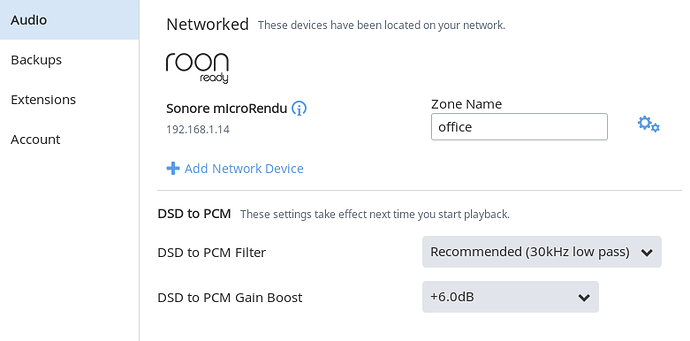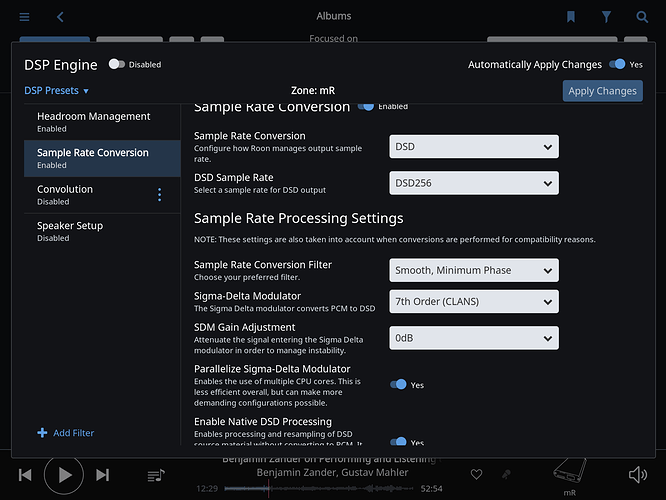From the description of the inputs on pp.5 and 14 of the Brooklyn Manual the USB input appears to accept native DSD rather than DoP.
DoP stands for “DSD over PCM” and means that the DSD signal has been decimated into 10bit words. It’s a transmission protocol that can make it easier for DSD to be sent over coax or Toslink.
The microRendu tells the Roon Core how to send it DSD.
Using a web browser on the same network as your microRendu, navigate to Sonicorbiter.com. You should see your mR listed as a network player. Click Manage to access it. Under Apps, check that Roon Ready is selected as the active App in App Switcher. Under Settings, click Roon Ready and next to DSD Support select Native DSD. Save changes and close Sonicorbiter.
In Roon select the mR as the active zone. Right click on the Zone icon in the footer and access the DSP Engine.
Enable Headroom Management and check that Show Clipping Indicator is set to Yes. Set Headroom Adjustment to 0dB for the moment.
Enable Sample Rate Conversion and configure it as follows:
Enable the DSP Engine (top left) and play either a PCM or DSD file in Roon. It should show on the Brooklyn as DSD 256 and hopefully you hear music. It will sound softer than PCM as DSD modulators have an inbuilt headroom adjustment. You can adjust your preamp to retain your preferred listening volume.
If the Signal Path Indicator flashes red, then return to the Headroom Management and increase the Headroom Adjustment. Set it to -3 and then increment by -1 until the Signal Path Indicator no longer flashes red.
Play with the filters and modulaters on the Sample Rate Conversion screen until you find the combination you prefer. Precise filters are longer with a sharper cutoff frequency. Smooth filters are shorter (better transients) but have a gentler slope (more ultrasonic noise).
Linear phase filters pass all frequencies at the same time. Minimum phase filters pass frequencies at minimum time, meaning high frequencies are delayed slightly less than low frequencies.
The selection in the screenshot should work well for jazz or rock. With Classical you might prefer a precise linear phase filter.


